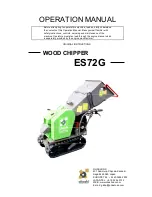
Installation Mechanical
42
RTAF-SVX001K-EN
Freeze Avoidance
One or more of the ambient freeze avoidance methods in
table below must be used to protect the Sintesis™ chiller
from ambient freeze damage.
By taking the steps outlined above, the RTAF Sintesis
chiller should be protected from chilled fluid freezing
down to the indicated ambient temperature. In addition,
there are general recommendations and application
details that may be considered to reduce the chilled fluid
freeze potential. These include:
•
Avoid the use of very low or near minimum chilled
fluid flow rates through the chiller. Higher velocity
chilled fluid flow reduces freeze risk in all situations.
Flow rates below published limits have increased
freeze potential and have not been considered by
freeze protection algorithms.
•
Avoid applications and situations that result in a
requirement for rapid cycling or repeated starting and
stopping of the chiller, especially with ambient
temperatures below freezing. Keep in mind that chiller
control algorithms may prevent a rapid compressor
restart after shutting down when the evaporator has
been operating near or below the LERTC limit.
•
Maintain refrigerant charge at appropriate levels. If
charge is in question, contact Trane service. A reduced
or low level of charge can increase the likelihood of
freezing conditions in the evaporator and/or LERTC
diagnostic shutdowns.
Table 17. RTAF freeze avoidance methods
Method
Protection
Range
Notes
Water
Pump
Control
and
Heaters
Down to -4°F
• Heaters alone will provide low ambient protection down to -4°F (-20°C), but will NOT protect the
evaporator from freezing as a result of charge migration. Therefore, it is required that water pump
control be used in conjunction with heaters.
• Heaters are factory-installed on the evaporator and water piping and will protect them from freezing.
• Install heat tape on all water piping, pumps, and other components that may be damaged if exposed to freezing
temperatures. Heat tape must be designed for low ambient temperature applications. Heat tape selection should
be based on the lowest expected ambient temperature.
• Symbio™ 800 controller can start the pump when freezing conditions are detected. For this option the pump must
to be controlled by the Sintesis unit and this function must be validated.
• Water circuit valves need to stay open at all times.
•
Water pump control and heater combination will protect the evaporator provided power is available to
the pump and the controller. This option will NOT protect the evaporator in the event of a power failure
to the chiller unless backup power is supplied to the necessary components.
• When no chiller operation is possible and the pump is already off, Symbio™ 800 pump control for freeze protection
will command the pump to turn:
ON if the respective circuit’s LERTC Integral was seen to be >0 for a period of time. The LERTC integral is increased
if the Evap Refrigerant Pool Temp is below the value of the Low Evap Rfgt Temp 2°F.
OFF if respective Evap Rfgt Pool Temp rises 4°F above LERTC setting for 1 minute and Chiller Off LERTC Integral = 0.
Note: Time period referenced for ON and Off conditions above is dependent on past running conditions and present
temperatures measured.
ON if entering OR leaving water temperature< LWTC for 30°F-sec (1.11°C-sec)
OFF if both entering and leaving water temps rise 2°F above the LWTC setting for 5 minutes.
Freeze
Inhibitor
Varies.
• Freeze protection can be accomplished by adding sufficient glycol to protect against freezing below the lowest
ambient expected.
Important: Be sure to apply appropriate LERTC and LWTC control setpoints based on the concentration of the freeze
inhibitor or solution freeze point temperature. Note that these settings vary with unit size. See
Refrigerant Cutout and Glycol Requirements,” p. 43
• For units with free-cooling option, glycol solution is REQUIRED. See
“Free-Cooling Fluid Management,” p. 76
•
Use of glycol type antifreeze reduces the cooling capacity of the unit and must be considered in the
design of the system specifications.
Drain
Water
Circuit
Below -4°F
• Shut off the power supply to the unit and to all heaters.
• Completely drain water from evaporator and exposed water piping not otherwise protected from freezing. See
“Waterbox Drains and Vents,” p. 30
• Blow out the evaporator to ensure no liquid is left in the evaporator and water lines.
NOTICE
Evaporator Damage!
Failure to follow these instructions could result in
damage to the evaporator.
Water must be flowing through the evaporator during
the entire charging process to avoid freezing and
rupturing of the evaporator tubes. Charge first with
vapor to avoid freezing tubes.
If insufficient concentration or no glycol is used, the
evaporator water pumps must be controlled by the
chiller controller to avoid severe damage to the
evaporator due to freezing. A power loss of 15 minutes
during freezing can damage the evaporator. It is the
responsibility of the installing contractor and/or the
customer to ensure that a pump will start when called
upon by the chiller controls.
















































